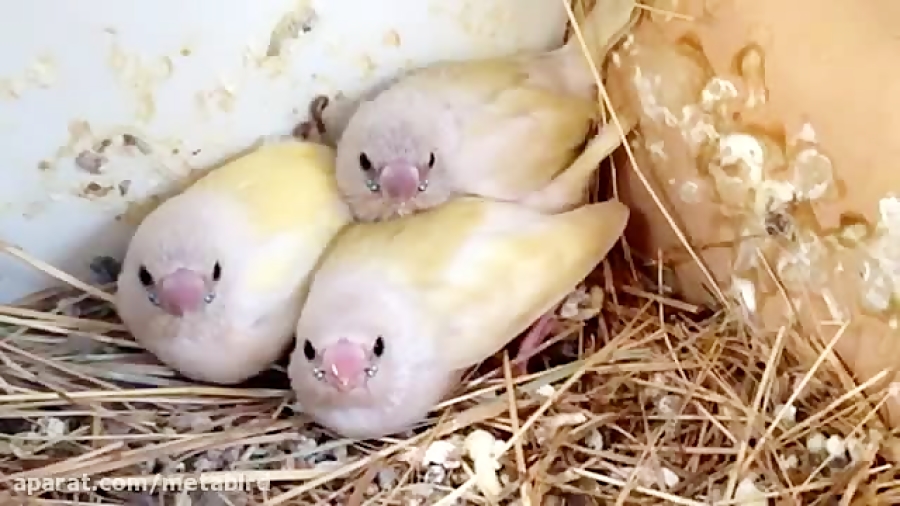Bad baby foods
Homemade baby food contains as many toxic metals as store bought, report says
CNN —
Making baby food at home with store-bought produce isn’t going to reduce the amount of toxic heavy metals in the food your baby eats, according to a new report released exclusively to CNN.
“We found no evidence to suggest that homemade baby foods made from store-bought produce are better than store-bought baby foods when it comes to heavy metal contamination,” said the paper’s coauthor Jane Houlihan, research director for Healthy Babies, Bright Futures. An alliance of nonprofits, scientists and donors, HBBF, which produced the report, has a stated mission of reducing babies’ exposures to neurotoxic chemicals.
READ MORE: Manufacturers allowed baby food contaminated with heavy metals to remain on shelves, lawmakers say
Researchers tested 288 foods bought at stores and farmers markets across the United States – including grains, fruits, vegetables, snacks, teething foods, and family items that babies eat, such as cereals and rice cakes – for lead, arsenic, mercury and cadmium. Those heavy metals are among the World Health Organization’s top 10 chemicals of concern for infants and children.
“Toxic metal exposure can be harmful to the developing brain.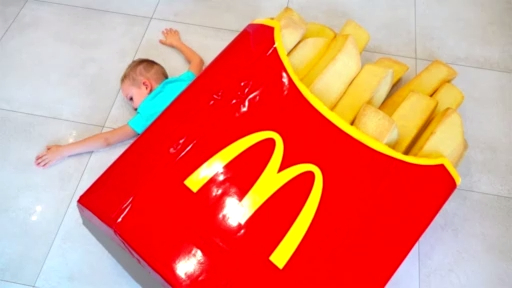 It’s been linked with problems with learning, cognition, and behavior,” according to the American Academy of Pediatrics.
It’s been linked with problems with learning, cognition, and behavior,” according to the American Academy of Pediatrics.
Researchers also pored over data from 7,000 additional food tests reported in published studies and by the US Food and Drug Administration.
Results showed 94% of manufactured baby foods, family foods and homemade purees made from purchased raw foods contained detectable amounts of one or more heavy metals.
Lead was found in 90% of manufactured baby food bought by shoppers for the report and 80% of store-bought family food and homemade purees.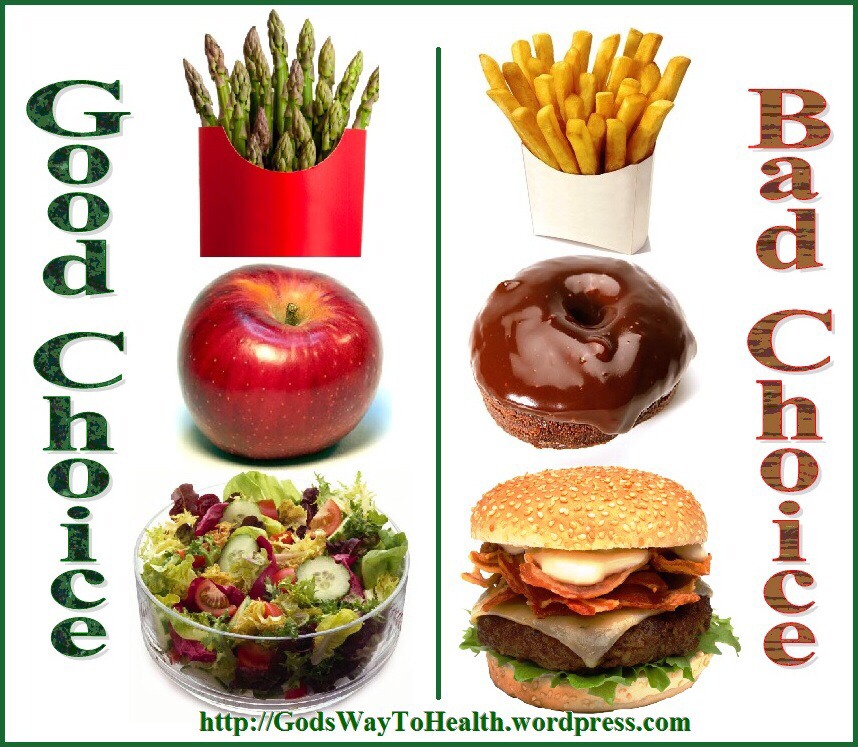 There is no safe level of lead, according to the AAP.
There is no safe level of lead, according to the AAP.
Arsenic was found in 68% store-bought baby food and 72% of family food either purchased or prepared at home. Cadmium was found in 65% of purchased baby food and 60% of family foods, and mercury was in 7% of store-bought baby food and 10% of family foods. (The highest levels of mercury are found in seafood, which was not tested in this analysis.)
READ MORE: 95% of tested baby foods in the US contain toxic metals, report says
The new report is a follow-up to a November 2019 report in which Healthy Babies, Bright Futures tested 168 foods purchased from major baby food manufacturers.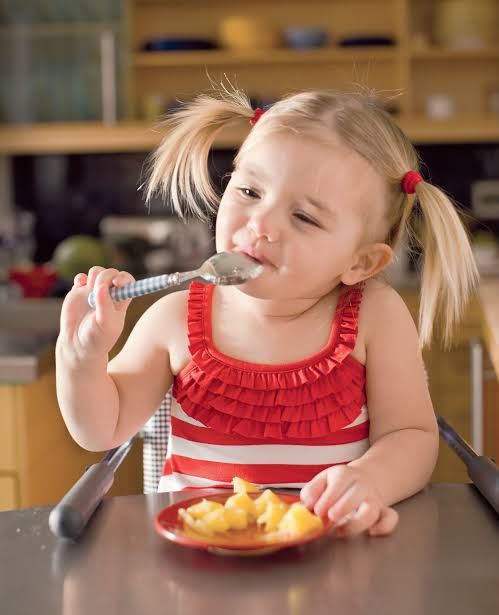 That analysis found 95% of store-bought baby food contained lead, 73% contained arsenic, 75% contained cadmium and 32% contained mercury. One-fourth of the foods tested that year contained all four heavy metals.
That analysis found 95% of store-bought baby food contained lead, 73% contained arsenic, 75% contained cadmium and 32% contained mercury. One-fourth of the foods tested that year contained all four heavy metals.
“After that report we saw so many people saying you can get around this problem by making your own baby food at home, so we decided to check,” Houlihan said. “We suspected we’d find heavy metals in all kinds of food because they’re ubiquitous contaminants in the environment.
“And that is exactly what we found – heavy metals were in foods from every section of the store,” Houlihan said. “What this says is that as the FDA is setting standards for heavy metals in baby food, they need to go beyond the baby food aisle. ”
”
What’s a parent or caregiver to do? Feed baby with as many different types of foods as possible, said pediatrician Dr. Mark Corkins, chair of the Committee on Nutrition of the American Academy of Pediatrics. He was not involved in the study.
“If you spread foods out, and offer a wide variety of options, you’ll have less toxicity,” Corkins said. “And nutritionally that’s always been the right thing to do to get the most micronutrients from the food you eat.”
The report found buying organic didn’t lower heavy metal levels either, which was “not shocking or surprising,” said Corkins, a professor of pediatrics at the University of Tennessee Health Science Center and Le Bonheur Children’s Hospital in Memphis, Tennessee.
“It’s the soil and water that’s contaminated with arsenic and other heavy metals, so it doesn’t matter if it’s organic or traditional farming methods,” Corkins said. That would apply to locally grown crops or even backyard gardens, if the soil had not been verified to be metal-free.
However, buying organic can help avoid other toxins the new report did not consider, such as herbicides and pesticides, said Dr. Leonardo Trasande, director of environmental pediatrics at NYU Langone Health. He was not involved in the study.
“There are other benefits to eating organic food, including a reduction in synthetic pesticides that are known to be as bad for babies, if not even more problematic,” Trasande said.
READ MORE: Doctors should test levels of PFAS in people at high risk, report says
“We’ve seen multiple studies show significant effects of synthetic pesticides on cognitive function in children as a result of prenatal exposure. We’ve seen images of the brain where certain parts are smaller that are crucial for higher order functioning after exposure,” he added. “A simple step would simply be to say eat organic because regardless of anything we’re talking about in this report, it’s good for you.”
Experts agree that battling toxins in baby foods is a job for government organizations who will need to work with growers, suppliers and manufacturers to institute regulations and safeguards. In the meantime, parents can make a difference.
In the meantime, parents can make a difference.
“Making even one simple choice every day to lower a child’s exposure will make a difference, whether that’s staying away from rice-based snacks and serving a diced apple instead or choosing not to serve carrots and sweet potatoes every day,” Houlihan said.
“With heavy metals and other toxins the risks add up over a lifetime,” she added. “So even if some of these foods had been served to a child up to their second birthday, starting from there to lower exposure to toxins is going to add up. Every choice matters.”
Tested foods with low metal content contain one-eighth as much heavy metal contamination as foods with the highest levels, Houlihan said. These are foods that can be “eaten freely,” the report suggested.
These are foods that can be “eaten freely,” the report suggested.
Fresh bananas, with heavy metal levels of 1.8 parts per billion, were the least contaminated of foods tested for the report. That’s an “82-fold difference in average level of total heavy metals” from the most contaminated food, rice cakes, which tested at 147 parts per billion, according to the investigation.
READ MORE: ‘Consider chemical hazards’ in the baby foods you sell, FDA warns manufacturers
After bananas, the least contaminated foods were grits, manufactured baby food meats, butternut squash, lamb, apples, pork, eggs, oranges and watermelon, in that order. Other foods with lower levels of contamination included green beans, peas, cucumbers, and soft or pureed home-cooked meats, the report found.
Other foods with lower levels of contamination included green beans, peas, cucumbers, and soft or pureed home-cooked meats, the report found.
Infant formula made with lead-free tap water was recommended. Tap water that has been tested and is free of lead is always a good choice. Milk is also a good choice, but only for babies 12 months and older.
Some healthy lower-metal foods, such as yogurt, unsweetened applesauce, beans, cheese, hard-boiled eggs and grapes that have been cut lengthwise, were good choices for snacks for babies, according to the report.
Fresh and frozen fruit – including those used in homemade purees – were options as well. But don’t use canned fruits if you can avoid it: “Tests find lead 30 times more often in canned fruit than in fresh and frozen fruit,” the report stated.
But don’t use canned fruits if you can avoid it: “Tests find lead 30 times more often in canned fruit than in fresh and frozen fruit,” the report stated.
Parents and caregivers can also lower their baby’s exposure to heavy metals by making some smart substitutions, the report said.
Using a frozen banana for a teething baby instead of a rice-based teething biscuit or rice rusk could lower total intake of heavy metals by 95%, according to the report. Another suggested teething aid: peeled and chilled cucumber spears.
The most heavily contaminated foods eaten by babies were all rice-based: “Rice cakes, rice puffs, crisped rice cereals and brown rice with no cooking water removed are heavily contaminated with inorganic arsenic, which is the more toxic form of arsenic,” Houlihan said.
Arsenic is a natural element found in soil, water and air, and because rice is grown in water, it is especially good at absorbing inorganic arsenic. (“Inorganic” is a chemical term and has nothing to do with the method of farming.) Brown and wild rice are the worst offenders, as the bran contains the highest arsenic concentrations.
READ MORE: New FDA limits on arsenic levels in infant rice cereals don’t adequately protect children, critics say
Prior research has shown that even low levels of inorganic arsenic exposure can impact a baby’s neurodevelopment. A meta-analysis of studies on the topic found a 50% increase in arsenic levels in urine would be associated with a 0.4-point decrease in the IQ of children between the ages of 5 and 15.
A meta-analysis of studies on the topic found a 50% increase in arsenic levels in urine would be associated with a 0.4-point decrease in the IQ of children between the ages of 5 and 15.
Testing by HBBF found rice cakes were the most contaminated with inorganic arsenic, followed by crisped rice cereal, rice-based puffs and brown rice. The report recommended those foods be avoided entirely, unless the brown rice is cooked with extra water that is poured off before consumption (much like pasta). It’s best to do that with all rice, including white and wild rice, the report said, as it can reduce arsenic levels by up to 60%.
Rice-based teething biscuits or rusks and white rice came next on the most contaminated list, the report said. White rice is milled to remove the outer layers, but experts say arsenic levels remain high enough to be concerning, especially if rice is a daily staple.
White rice is milled to remove the outer layers, but experts say arsenic levels remain high enough to be concerning, especially if rice is a daily staple.
“Inorganic arsenic averaged 100 parts per billion in brown rice infant cereal and 74 parts per billion in white rice infant cereal in our tests,” Houlihan said. “Baby food companies have taken brown rice cereal off the market because of its high arsenic levels.”
READ MORE: Water- and stain-resistant products contain toxic plastics, study says. Here’s what to do
Parents and caregivers can help by staying away from high-arsenic varieties of white rice grown in Arkansas, Louisiana, Texas, or simply “US” and instead choosing lower-arsenic basmati rice from California, India and Pakistan, as well as sushi rice from the US, the report said.
After rice-based foods, the analysis found the highest levels of heavy metals in raisins, non-rice teething crackers, granola bars with raisins and oat-ring cereals. But those were not the only foods of concern: Dried fruit, grape juice, arrowroot teething crackers and sunflower seed butter all contained high amounts of at least one toxic metal, according to the report.
“Many foods have a kind of unique, heavy metal profile,” Houlihan explained. “For example, we saw very high levels of cadmium in things like spinach, leaf lettuce and peanut butter.”
However, the human body doesn’t absorb cadmium as easily as other heavy metals, and for that reason “it doesn’t have as high a level of concern,” Houlihan added.
“There’s also not as much evidence that cadmium is neurotoxic to babies, or at least the body of evidence isn’t there at the same levels as lead and arsenic,” she said. “Lead and arsenic damage isn’t reversible – these are permanent impacts on IQ, learning ability and behavior, so it’s a big deal.”
Root and tuber vegetables may have higher levels of heavy metals like lead and arsenic because they grow underground. In fact, the investigation found that nutritious baby favorites like carrots, sweet potatoes, squash and many types of potatoes did have concerning levels of heavy metals.
READ MORE: Dangerous chemicals found in food wrappers at major fast-food restaurants and grocery chains, report says
Even the same food could have varying levels of toxic metals, according to the report. For example, a shopper in Raleigh, North Carolina, bought a sweet potato with 60.7 parts per billion of lead – 10 times more than the store-bought sweet potato puree she purchased. A Chicago shopper purchased a fresh carrot with eight times more arsenic than the premade carrot baby food she took home, the investigation found.
Yet shoppers in Tennessee and California found the opposite – their fresh produce had minimal levels of heavy metals compared with the manufactured baby food brands they bought.
“As a parent, you don’t know what you’re picking up out of the produce bin,” Houlihan said. “Is it elevated because of the cultivar – the particular type of sweet potato or carrot? Or is it elevated because it’s grown in an area where the soil has naturally high levels of lead?
Answering these questions will be the responsibility of government regulators and industry, Houlihan said. The FDA has a Closer to Zero campaign, for example, which could take on the issue.
CNN has reached out to the FDA for comment but hasn’t yet received a response.
“And remember, if you’re protecting the basic ingredients that parents are using to make food at home, you’re not only protecting babies and toddlers, you’re protecting pregnant women as well. Babies in utero are particularly vulnerable to toxins while the brain is growing at such a rapid pace.”
With no way of knowing levels of toxic metals in the soil where produce is grown, parents and caregivers need to add one more step to their efforts to avoid these substances, Houlihan suggested. In addition to mixing up the variety of foods and not serving the same options each day, parents can “choose different brands or varieties of foods or shop in different stores from week to week to avoid choosing a high-metal source regularly.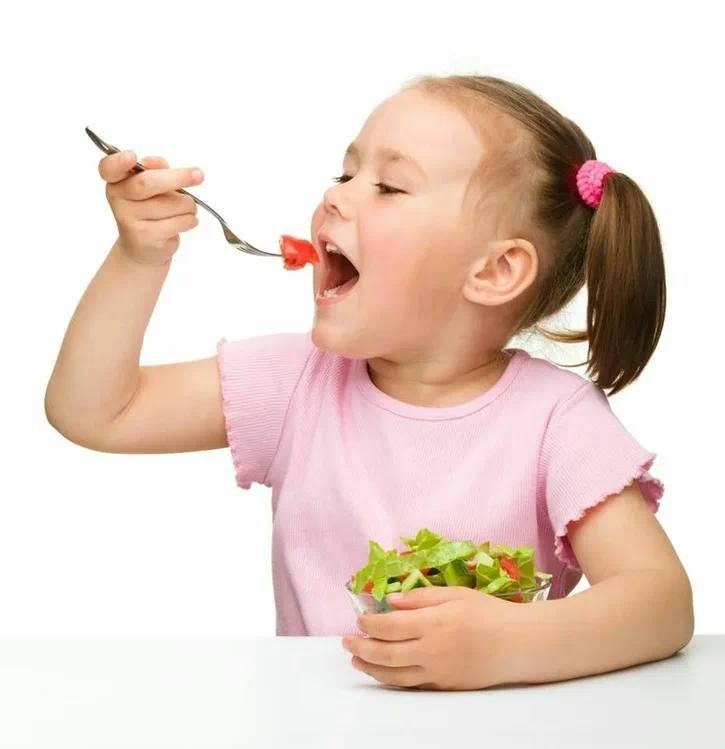 ”
”
Sign up for CNN’s Eat, But Better: Mediterranean Style. Our eight-part guide shows you a delicious expert-backed eating lifestyle that will boost your health for life.
UPDATED 2022: Baby Foods Toxic Heavy Metals List
When parents first heard the news that many major baby food brands contain dangerous amounts of toxic heavy metals, most believed the U.S. Food and Drug Administration (FDA) would step in to better protect children from arsenic, cadmium, lead, and mercury. Studies show that exposure to these toxic heavy metals during early childhood can lead to neurodevelopmental disorders, including autism spectrum disorder (ASD) and attention-deficit/hyperactivity disorder (ADHD).
The FDA reacted to the 2021 baby food report on heavy metals by creating the Closer to Zero campaign, which aims to limit the amounts of toxic metals in baby foods over time. The problem? The plan gradually phases out heavy metals from baby food by 2024. Some experts have predicted it may take even longer than the proposed 2024 date to make significant changes to industry practices. How are parents supposed to protect their children from heavy metals in baby foods in the meantime?
The problem? The plan gradually phases out heavy metals from baby food by 2024. Some experts have predicted it may take even longer than the proposed 2024 date to make significant changes to industry practices. How are parents supposed to protect their children from heavy metals in baby foods in the meantime?
“The unfortunate reality is that the FDA has left parents with the burden of researching every product they buy to ensure they are not inadvertently feeding their child arsenic, lead, and other dangerous toxic metals,” says baby food lawyer Pedram Esfandiary. “To date, the FDA has only enacted limits for heavy metals in infant rice cereal and juice, so parents are essentially on their own to figure out for themselves the risks associated with all other foods they give their children.”
Esfandiary and his colleagues are preparing to take the first toxic baby food lawsuit to trial next year. Wisner Baum currently represents thousands of parents throughout the nation who allege their children developed autism and/or ADHD after consuming baby foods from the following companies:
- Beech-Nut
- Gerber
- Hain Celestial Group (Earth's Best Organic)
- Nurture (Happy Family Organics and Happy BABY)
- Plum Organics
- Sprout Foods (Sprout Organic Food)
- Walmart (Parent's Choice)
To better assist parents looking for brands and products to avoid, we have created an updated 2022 baby foods toxic heavy metals list (click here for our list of baby foods to avoid from March of 2022). Below you will find baby foods that tested at high levels for arsenic, cadmium, mercury, and lead. The list is based on the recently released report from Healthy Babies Bright Futures (HBBF), a non-profit consumer advocacy organization that has been following the heavy metals issue for years.
Below you will find baby foods that tested at high levels for arsenic, cadmium, mercury, and lead. The list is based on the recently released report from Healthy Babies Bright Futures (HBBF), a non-profit consumer advocacy organization that has been following the heavy metals issue for years.
2022 List of Baby Foods That Contain Toxic Heavy Metals
In its August 2022 report, HBBF tested 288 foods and analyzed more than 7,000 additional baby food testing data from published studies. The report found that:
- 94% of all food samples tested had detectable amounts of toxic heavy metals. This included store-bought baby foods as well as homemade purees.
- Rice cakes and crisped rice cereal were heavily contaminated with arsenic.
- High levels of arsenic, cadmium, and lead were found in fresh carrots and sweet potatoes. HBBF recommends parents to vary the sourcing of these products and peel before serving.
Baby foods most contaminated with toxic metals (in order of most contaminated):
- Rice Cakes
- Crisped Rice Cereal
- Rice Puffs
- Brown Rice
- Rice Teething Biscuits and Rusks
- White Rice
- Raisins
- Teething Crackers (Non-Rice)
- Granola Bars with Raisins
- Oat-Ring Cereal
Baby Food High in Arsenic
The FDA has a maximum allowable limit of 10 parts per billion (ppb) arsenic in bottled water, yet the parts per billion of arsenic in a large portion baby food far exceeds this limit, putting babies at a severely higher risk of absorbing this toxic heavy metal. It is important to remember that infants and babies consume more food in relation to their body weight and absorb arsenic more readily than adults.
It is important to remember that infants and babies consume more food in relation to their body weight and absorb arsenic more readily than adults.
Below are some of the baby foods that the HBBF report indicated for high levels of arsenic:
- Nature’s Promise Organic – Puffs, Broccoli & Spinach Whole Grain (372 ppb)
- Full Circle Market – Multigrain Rice Cakes Organic (355 ppb)
- Happy BABY – Puffs Organic Grain Snack Sweet Potato & Carrot (318 ppb)
- Hyvee – Rice Cakes Whole Grain Salted (302 ppb)
- WaterMaid – Rice Medium Grain Enriched (278 ppb)
- Organics – Rice Cakes Unsalted (251 ppb)
- Lundberg – Rice Cake Whole Grain Brown Rice Lightly Salted (208 ppb)
- Mahatma – Rice, Whole Grain Brown (203 ppb)
- Lundberg – Rice Cake Whole Grain Brown Rice No Salt (201 ppb)
- Lieber’s – Rice Cakes With Salt (196 ppb)
- Quaker – Rice Cakes Lightly Salted 100% Whole Grain (196 ppb)
- Shop Rite – Rice Cakes – Lightly Salted 10g Whole Grain Fat Free (193 ppb)
- Quaker – Rice Cakes Lightly Salted (187 ppb)
- Essential Everyday – White Rice (182 ppb)
- Signature Select – Enriched Long Grain Rice (163 ppb)
- Wegmans – White Rice Jasmine Organic (139 ppb)
- Good & Gather – Long Grain Brown Rice (138 ppb)
- Gerber – Rice Cereal Single Grain Supported Sitter 1st Foods (122 ppb)
- Gerber – Rice Organic, Single Grain Cereal, Supported Sitter 1st Foods (118 ppb)
- Organics – Puffs Purple Carrot and Blueberry (118 ppb)
- Earth’s Best Organic – Rice Cereal Organic Iron Fortified (109 ppb)
- Quaker – Rice Cakes, Butter Popcorn (110 ppb)
- Happy BABY – Teethers Organic Sweet Potatoes and Bananas (95 ppb)
- Gerber – Teethers Strawberry Apple Spinach (89.
 1 ppb)
1 ppb) - Nature’s Promise Organic – Rice Rusks Organic Apple (86.9 ppb)
- Lundberg – White Rice Basmati (84.9 ppb)
- Kroger – Rice Long Grain Enriched (80 ppb)
- Nature’s Promise Organic – Rice Rusks, Organic Apple (79.4 ppb)
- Gerber – Teethers Banana Peach, 7+ Months (73.7 ppb)
- Happy BABY – Teether Crackers Organic Strawberry & Beet (55.2 ppb)
- Happy BABY – Teether Crackers Organic Mango & Pumpkin (52.3 ppb)
- Happy BABY – Teether Crackers Organic Blueberries and Purple Carrots (51.5 ppb)
- Gerber – Puffs (49.7 ppb)
- Gerber – Puffs Blueberry Crawler (48.8 ppb)
- Organics – Teething Wafers Baked Rice Snack Banana Flavored (43.9 ppb)
- Gerber – Puffs Banana Crawler (43.7 ppb)
- Gerber – Puffs Strawberry Apple Crawler (43.7 ppb)
- Gerber – Puffs Sweet Potato Crawler (41.4 ppb)
- Gerber – Oatmeal Single Grain, Supported Sitter 1st Foods (39.7 ppb)
- General Mills – Cheerios 100% Whole Grain Oats Cereal (34.
 3 ppb)
3 ppb) - Kroger – Original Oats Instant Oatmeal (30.9 ppb)
Baby Food High in Lead
The FDA has a maximum allowable limit of 5 parts per billion (ppb) lead in bottled water, yet the amount of lead in some popular baby foods surpasses this limit by at least four times in some cases. It is important to remember that infants and babies consume more food in relation to their body weight and absorb lead more readily than adults.
Below are some of the baby foods that the HBBF report indicated for high levels of lead:
- O Organics – Puffs Purple Carrot and Blueberry (22.8 ppb)
- Birds Eye – Green Beans Steamfresh Cut, Frozen (22.4 ppb)
- Gerber – Sweet Potato Supported Sitter 1st Foods (19.6 ppb)
- Plum Organics – Just Sweet Potato Stage 1, 4 Months & Up (18.2 ppb)
- Earth’s Best Organic – Rice Cereal Organic Iron Fortified (16.4 ppb)
- Happy BABY – Teether Crackers Organic Strawberry & Beet (13.4 ppb)
Baby Food High in Cadmium
The FDA has a maximum allowable limit of 5 parts per billion (ppb) cadmium in bottled water, however, the quantity of cadmium in an assortment of baby foods contains much higher (dangerous) levels of cadmium. It is important to remember that infants and babies consume more food in relation to their body weight and absorb cadmium more readily than adults.
It is important to remember that infants and babies consume more food in relation to their body weight and absorb cadmium more readily than adults.
Below are some of the baby foods that the HBBF report indicated for high levels of cadmium:
- Kroger – Rice Long Grain Enriched (139 ppb)
- Good & Gather – Long Grain Brown Rice (107 ppb)
- O Organics – Puffs Purple Carrot and Blueberry (96 ppb)
- Earth’s Best Organic – Rice Cereal Organic Iron Fortified (44 ppb)
- John McCann – Oatmeal Steel Cut (42.3 ppb)
- Publix – Carrots Baby-Cut Peeled (39.7 ppb)
- Kroger – Original Oats Instant Oatmeal 100% Whole Grain Quick 1 Minute (37.8 ppb)
- Vegco – Carrots Canada (30.6 ppb)
- Simple Truth Organic – Whole Carrots (29.3 ppb)
- Gerber – Carrot, Natural for Baby, Sitter 2nd Foods (25.8 ppb)
- Gerber – Carrot Sitter 2nd Foods (24.7 ppb)
- General Mills – Cheerios 100% Whole Grain Oats Cereal (24.
 4 ppb)
4 ppb) - Bolthouse Farms – Carrots (22.3 ppb)
- Great Value – Old Fashioned Oats (21.8 ppb)
- Essential Everyday – White Rice (20.2 ppb)
- Gerber – Puffs (19.7 ppb)
- Kroger – Oats 100% Whole Grain Quick 1 Minute (19.6 ppb)
- Mahatma – Rice Whole Grain Brown (19.4 ppb)
- Quaker – Rice Cakes Lightly Salted (18.9 ppb)
- Nature’s Promise Organic – Puffs Broccoli & Spinach Whole Grain (18.6 ppb)
- O Organics – Toasted O’s Cereal (16.9 ppb)
- Fifth Crow – Carrots Organic (16.8 ppb)
- Signature Select – Enriched Long Grain Rice (16.2 ppb)
- Gerber – Oatmeal Single Grain, Supported Sitter 1st Foods (15.3 ppb)
- Beech-Nut – Whole Grain Baby Cereal (15.3 ppb)
Baby Food High in Mercury
The U.S. Environmental Protection Agency (EPA) has a maximum allowable limit of 2 parts per billion (ppb) mercury in drinking water, yet the levels of mercury in some common baby food is twice that in some cases. It is important to remember that infants and babies consume more food in relation to their body weight and absorb mercury more readily than adults.
It is important to remember that infants and babies consume more food in relation to their body weight and absorb mercury more readily than adults.
Below are some of the baby foods that the HBBF report indicated for high levels of mercury:
- Hyvee – Rice Cakes Whole Grain Salted (4.8 ppb)
- Wegmans – White Rice Jasmine Organic (4.1 ppb)
- Mahatma – Rice, Whole Grain Brown (3.7 ppb)
- Essential Everyday – White Rice (3.7 ppb)
- Quaker – Rice Cakes, Butter Popcorn (3.6 ppb)
- Quaker – Rice Cakes Lightly Salted 100% Whole Grain (3.4 ppb)
These Baby Foods Were the Least Contaminated with Heavy Metals
Baby foods least contaminated with toxic metals (in order of least contaminated):
- Bananas
- Grits
- Branded Meats
- Butternut Squash
- Lamb
- Apples
- Pork
- Eggs
- Oranges
- Watermelon
The HBBF report recommends parents limit or rotate the following food products to avoid heavy metals:
- Cantaloupe – Should remain on the menu but consumed less than daily.

- Canned Fruit – Better choices are fresh or frozen.
- Sweet Potato, Potato, Carrot, and Baby Spinach – Rotate these foods and serve a variety (not the same one each day)
- Peanut Butter – Should remain on the menu but consumed less than daily.
- Fruit Juice (Not Grape) – 100% fruit juices are considered safe as long as they are rotated and not consumed daily. Better choices are fresh fruit and water.
- Oatmeal, Barley, Millet, Farro - Rotate these foods and serve a variety (not the same one each day).
Why Toxic Metals Are Bad
The FDA and U.S. Centers for Disease Control and Prevention (CDC) report that babies and young children exposed to arsenic, cadmium, lead, and/or mercury may suffer from permanent decreases in IQ, increased risk of future criminal and antisocial behavior, and untreatable, potentially permanent brain damage. Yet, the FDA is acting too slow and not doing enough to protect children and get baby food manufacturers to eliminate toxic heavy metals from its foods.
Linda McCauley, the Dean of the Nell Hodgson Woodruff School of Nursing at Emory University, says, “[n]o level of exposure to these metals has been shown to be safe in vulnerable infants.” She adds that exposure to several sources of heavy metals can cause cumulative effects that are particularly dangerous for young children.
For more information on the dangers of toxic metals, you can read expert reports from the toxic baby food litigation our firm is conducting:
- Dr. Michael Aschner
- Dr. Hannah Gardener
- Dr. Beate Ritz
- Dr. Kevin Shapiro
Baby Food Lawsuit 2022
Baby food lawyers from the law firm of Wisner Baum represent thousands of parents against several baby food manufacturers, alleging they knowingly sell products with dangerous levels of toxic metals. If your child was diagnosed with autism and/or ADHD and you believe the heavy metals in baby food are the cause, you may be able to pursue justice and compensation in a baby food autism lawsuit. Please fill out our case evaluation contact form or call our lawyers today at (855) 948-5098.
Please fill out our case evaluation contact form or call our lawyers today at (855) 948-5098.
Is it possible for adults to eat baby food: benefits and harms
- Photo
- Natalia Kurzova / Adobe Stock
Now we will talk about the benefits and harms of products made specifically for children. These include fruit and vegetable purees, juices and nectars, yoghurts and curds, cereals and various snacks for the little ones.
Pluses of baby food
No harmful ingredients
It is clear that baby food is made specifically for babies. Therefore, they do not add harmful additives, dyes, flavors, a lot of sugar and salt. Not a single ingredient in the composition should cause an allergy or any disorder in a baby - which means that such food is safe for an adult. Moreover, manufacturers are strictly looked after - all children's products undergo a thorough check, and only then they get on the shelves in stores.
Tasty and convenient
Children's curds, cereals and purees with a sweet fruity taste can easily replace high-calorie cakes and other "adult" desserts. Some may also like cookies in cute little packages.
Speaking of packaging. Kids are not physically able to eat a lot, so for them everything is laid out in small portions. And these jars and packaging are very convenient to take with you for a walk, to school or university.
Low Calorie
Children's fruit and vegetable purees, and in such tiny portions, are very, very few calories! Some stars even specifically switch to only baby food in order to lose weight. So, for example, did Jennifer Aniston and Reese Witherspoon.
Ready to follow suit? Well, slow down. Now let's talk about why you shouldn't do this.
Disadvantages of baby food
Few essential nutrients
Yes, these tasty purees contain only useful things and nothing harmful. But do not forget that this is still baby food. That is, it is made specifically for babies - taking into account the peculiarities of digestion of young children. And the body of an adult, you know, is very different. An adult needs a lot more fiber and dietary fiber - otherwise problems with the intestines will begin.
That is, it is made specifically for babies - taking into account the peculiarities of digestion of young children. And the body of an adult, you know, is very different. An adult needs a lot more fiber and dietary fiber - otherwise problems with the intestines will begin.
Sometimes it's not so tasty
Taste is both a plus and a minus of baby food. Sweet foods really look like a delicious dessert, but mashed vegetables and meat? We are used to cooking with all sorts of spices, which will definitely not be in the composition of dishes from a jar. In general, "adult" and "children's" food is very different in taste. You can, of course, get used to eating baby food all the time ... But why?
Is it useful or not?
There is nothing wrong with snacking on baby food occasionally. It can be quite healthy, tasty and without extra calories. But you definitely can’t replace all breakfasts, lunches and dinners with them - in this way you will deprive yourself of important components and harm your health.
Ekaterina Migacheva, Elena Bugai
Tags
- food
- healthy eating
Risks of malnutrition - Encyclopedia Baby food
Levchuk Viktoria © Levchuk Viktoria © 0060Healthy eating is one of the important factors which helps us stay healthy and active. Food plays a huge role in children's health, so it's important to eat a variety of foods so that children can get the nutrients they need. Therefore, I want to consider in the article the risks of poor nutrition.
What causes poor nutrition?
Table of Contents:
Bad eating habits include undereating or overeating, not getting enough of the healthy foods we need every day, or consuming too many foods and drinks that are low in fiber or high in fat, salt and/or Sahara.
These unhealthy eating habits can affect your intake of nutrients, including energy, protein, carbohydrates, essential fatty acids, vitamins and minerals, as well as fiber and fluids.
How does poor nutrition affect us?
Poor nutrition can impair our health, well-being and reduce our ability to lead a pleasant and active life.
In the short term, poor nutrition can contribute to stress, fatigue and reduced performance, and over time it can contribute to the risk of certain diseases and health problems such as:
- being overweight or obese
- memory loss (due to a diet high in sugar and fat, experiment performed on mice)
- high blood pressure
- insomnia (sugary drinks and processed foods)
- high cholesterol
- heart disease and stroke
- sugar type 2 diabetes
- osteoporosis
- certain cancers
- depression
- digestive problems (heartburn, gastritis)
- eating disorders.
Everyone knows that eating junk food is unhealthy and mostly leads to weight gain, but this is just the tip of the iceberg. In 2016, more than 44,000 people were recorded who died from cardiovascular diseases caused by malnutrition. This means regular consumption of unhealthy or poor quality foods, a cause currently attributed to more deaths worldwide than smoking.
This means regular consumption of unhealthy or poor quality foods, a cause currently attributed to more deaths worldwide than smoking.
Although death is the worst consequence of malnutrition, there are other risks (read above) associated with malnutrition, even for people who exercise regularly or occasionally. A proper diet low in saturated fats, chemical additives, preservatives and artificial colors is the basis for preventing a whole list of health problems.
humor children
How does poor nutrition affect children?
Children may reject healthy foods offered by their parents, such as vegetables or lean proteins, in favor of processed, fatty, or sugary foods such as pizza, french fries, and ice cream. The big problem, however, is that the consequences of childhood malnutrition go far beyond the battle at the dinner table and affect a child's future, academic performance, and health.
Malnutrition does not depend on nationality, gender or income level, but nevertheless, some groups of children are malnourished than others. It can be assumed that the level of income plays an important role in the child's eating habits. Iron deficiency anemia is twice as common in poor children aged 1 to 2 years as in the general population, and 13 percent of poor children experience stunting and wasting.
It can be assumed that the level of income plays an important role in the child's eating habits. Iron deficiency anemia is twice as common in poor children aged 1 to 2 years as in the general population, and 13 percent of poor children experience stunting and wasting.
It is also important to note that poor nutrition plays a significant role in a child's ability to learn. A child who does not eat fruits, vegetables, and dairy products may be deficient in nutrients such as vitamins A, B6, B12, C, iron, zinc, folate, and calcium, which in turn affects the brain and leads to higher performance. absenteeism, lateness and low grades. And iron deficiency in infancy can affect the loss of IQ in the future.
Precautions in systems thinking using baby food as an example
The steps to proper nutrition are easier than many people think
- choose fresh healthy foods from five groups every day.
- ideally eat two servings of fruits and five servings of vegetables a day
- rarely eat sugary, fatty, salty foods in small amounts
- drink fresh, clean water instead of sugary drinks
- switch to healthy recipes that look and taste good
- plan our meals in advance and buy healthy foods
- enjoy cooking and eating with family or friends without distractions such as television.
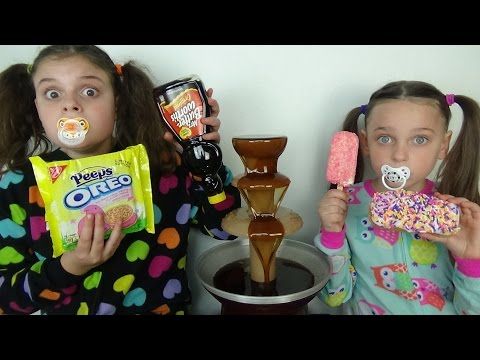
We are not afraid and add me to VK and Odnoklassniki, Instagram!
Like this article? Subscribe to site updates
"Encyclopedia Baby Food"!
Don't forget to bookmark us! (CTRL+SHIFT+D) Subscribe to the site, comment, share in social networks.
On our site Encyclopedia Baby Food there is useful information on the nutrition of your children, which is useful for everyone, and we update the site "Encyclopedia Baby Food" constantly and try to search and write only excellent, verified and necessary information for you and your children.
Disclaimer No. 1: It must be understood that the author of the articles on the Baby Food Encyclopedia website is not a medical staff, “I am not a doctor.” The information I share is based on my own experience. My goal is not to teach you how to eat or feed your child, but to talk about how we did it, what new things I learned or read. This expands the picture of Baby Food knowledge, gives you a glimpse of the whole process so you can decide if you like it or not.
This expands the picture of Baby Food knowledge, gives you a glimpse of the whole process so you can decide if you like it or not.
Disclaimer No. 2 : However, the above does not cancel visiting a pediatrician. Before you start complementary foods, you need to get his professional opinion on the best way to introduce new foods for your baby. I also draw your attention to the fact that you need to look at the original date of the published articles, because some of the "best practices" may have changed. Always check with your child's pediatrician about complementary foods and their health.
Disclaimer #3: Keep in mind that every family is unique, every situation is also completely unique. There are no universal solutions. Only you can find what works best for you. Certain goals require certain sacrifices and priorities - not everyone wants to make those choices, and that's GREAT! Just know what you want to achieve, and be ready to get to work, putting the best of your strength!
Disclaimer No.

